eCommerce Marketing in 2024: Best Practices to Drive Sales
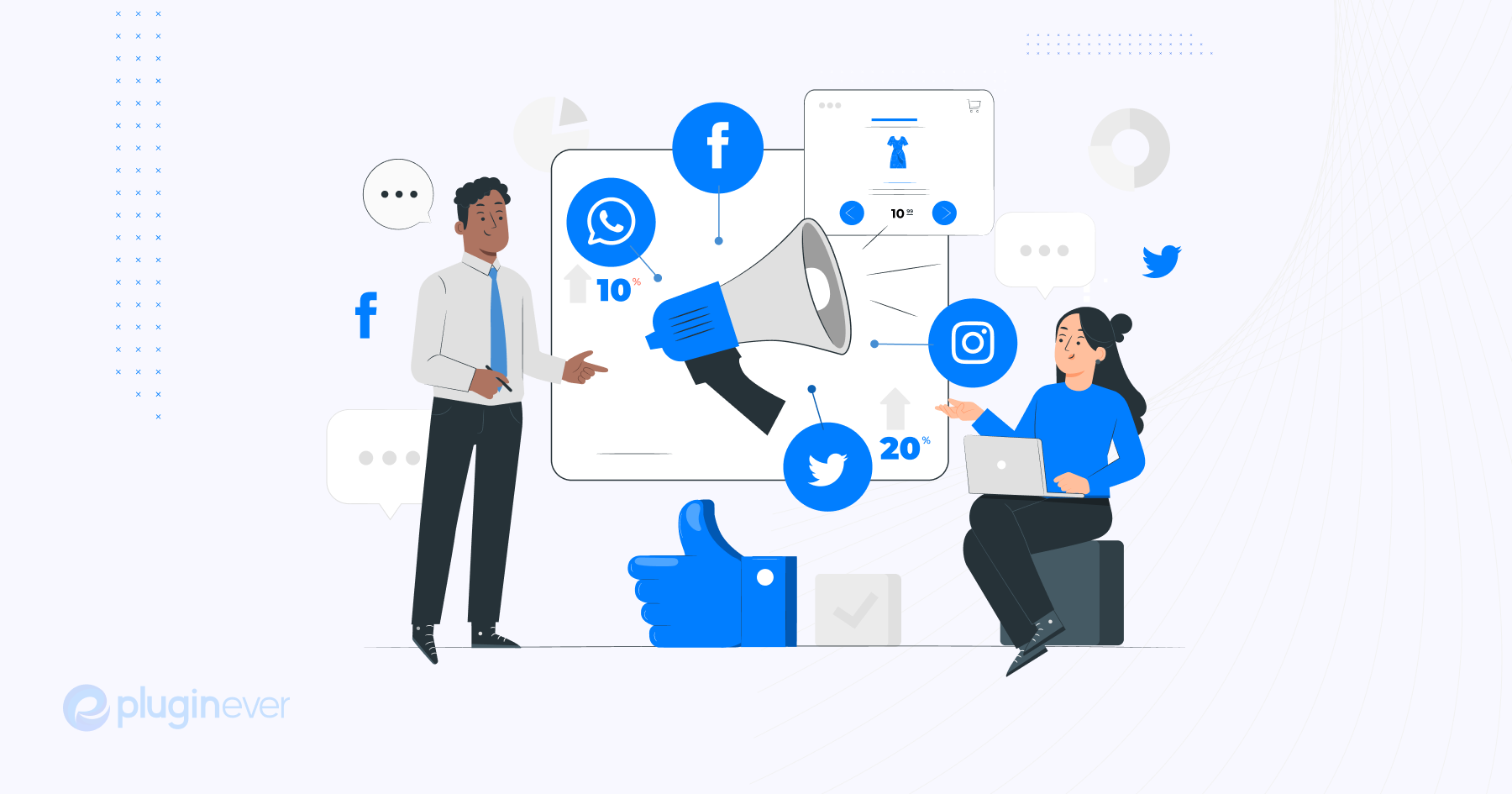
The ultimate goal of any business is to generate sales. But a traditional eCommerce marketing strategy will not take your eCommerce store anywhere near you expect it to be. To stay ahead and drive sales, businesses need to adapt and embrace the best practices for eCommerce marketing.
Whether you’re a small, or a large, established retailer, understanding and implementing these best practices can revolutionize your approach to online sales. Moreover, it might be challenging to decide on which marketing tactics you should utilize and how to implement this approach effectively.
Therefore, we have prepared for you the most updated and actionable strategies with a straightforward approach to how you can implement the growth hacks for your eCommerce marketing.
Growth hacking often involves a mix of SEO, social media, content marketing, email marketing, and other digital strategies to achieve scalable and cost-effective results, ensuring your business remains competitive by following the best practices in the ever-evolving digital marketplace.
So without further ado, let’s get started.
What is eCommerce Marketing and Growth Hacking

eCommerce marketing is essential to drive traffic to your online stores and convert traffic into paying customers. A sound marketing plan is essential to any eCommerce store to build brand awareness, attract potential customers, and ultimately, drive more sales to your store.
The goal of eCommerce marketing is to drive traffic to online stores, engage and convert visitors into customers, and foster ongoing customer relationships to encourage repeat purchases. It applies to both customer acquisition (getting new customers) and customer retention (retrieving old ones).
eCommerce marketing is concerned with all aspects of collaboration planning and solutions between a product/service and a sales channel. This means the eCommerce platform matters as well to make sure it is easier and more efficient to integrate your eCommerce store into your marketing channels.
From the eCommerce marketing perspective, growth hacking involves implementing creative and unconventional tactics to implement strategies and techniques aimed at rapidly and efficiently growing a business, especially in its early stages.
These methods focus on identifying innovative ways to attract and retain customers, optimize conversion rates, and increase brand visibility through experimentation, iteration, and a deep understanding of customer behaviors.
Let’s talk about it in more detail below.
Types of Business Models for eCommerce Marketing
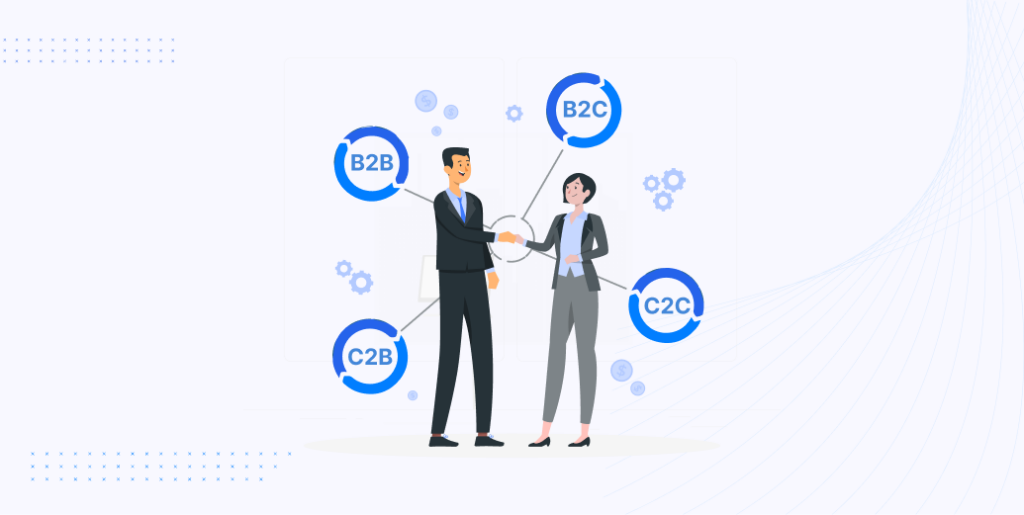
Businesses have different and separate models for segmentation and running operations. Therefore you cannot have the same approach of marketing to get the results. These are the business models that have emerged with the continuous growth of eCommerce.
Business-to-Customer (B2C)
In the B2C business model, companies sell products or services directly to individual customers. This is a common model where eCommerce platforms serve as virtual storefronts, enabling businesses to showcase and sell their offerings directly to the end customer.
B2C eCommerce relies heavily on marketing and branding to attract, engage, and convert individual buyers, often using a variety of digital marketing strategies to drive traffic to their online stores.
Business-to-Business (B2B)
The B2B model involves transactions between two businesses, where one business sells products or services to another. B2B eCommerce often focuses on streamlining procurement and supply chain processes through online platforms to efficiently purchase goods and services from suppliers.
Marketing efforts in B2B eCommerce typically involve targeted campaigns that emphasize the unique needs, benefits, and outcomes that appeal to business customers.
Customer-to-Customer (C2C)
C2C eCommerce facilitates transactions between individual customers through online platforms. These platforms act as intermediaries, allowing individuals to buy, sell, or exchange goods and services with each other.
C2C eCommerce relies on peer-to-peer marketing, as individuals themselves promote their products or services within the online marketplace, often through user-generated content, ratings, and reviews.
Customer-to-Business (C2B)
In the C2B model, individual customers offer products or services to businesses, often in a freelance or contract capacity. This model is common in digital marketplaces where independent contractors, freelancers, or content creators offer their expertise or services to businesses seeking specific needs.
C2B e-commerce marketing often involves individuals promoting their skills, capabilities, and offerings to attract business clients.
Direct-to-Customers (D2C)
D2C eCommerce eliminates intermediaries, allowing brands to sell their products directly to customers without traditional retail channels. This model often emphasizes building a strong brand presence and direct relationships with consumers.
D2C marketing focuses on creating engaging and personalized experiences, often leveraging digital channels and customer data analytics to drive direct sales and brand loyalty.
These business models serve as the foundation for various eCommerce marketing strategies, each requiring tailored approaches to engage their target audiences, establish a brand presence, and drive sales within the digital marketplace.
Besides, there are so many other methods of doing eCommerce business but you can’t rely on it as a proper business model. Such as white label business, private label business, dropshipping, subscription services, etc.
We’ll talk about them later on another blog.
The Ultimate eCommerce Marketing Platform: Why WooCommerce is the Go-To Choice
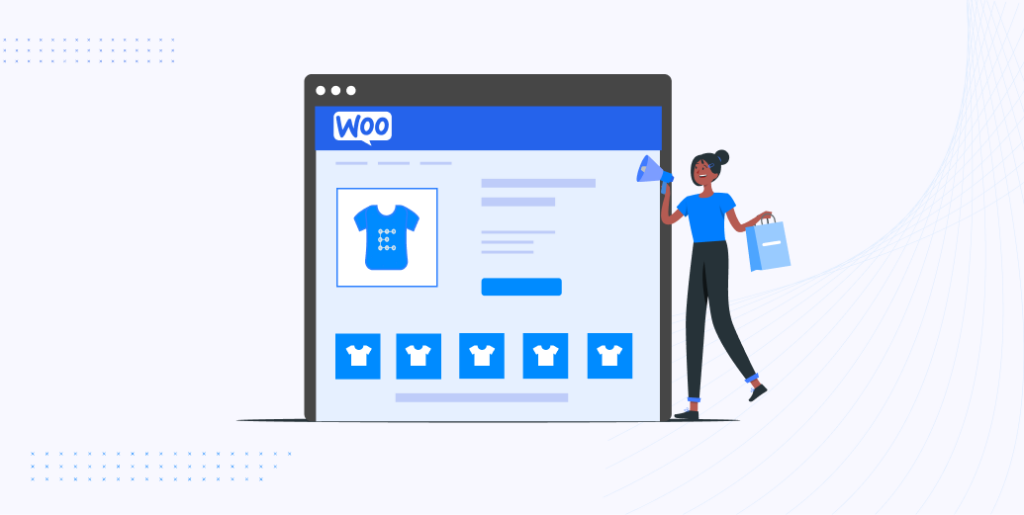
Currently, we have two strongest contenders when it comes to choosing the best eCommerce platform. One is WooCommerce and the other is Shopify. Both are giants and doing well in their perspectives. That is where it becomes difficult to choose between these two rulers of the eCommerce industry.
But I’ve written a complete comparison between WooCommerce vs Shopify and WooCommerce vs Shopify Plus. Make sure to check them out and then you’ll know why WooCommerce is the ultimate eCommerce marketing platform for your eCommerce business.
Let’s have a glimpse of it here.
- Seamless Integration with WordPress
- Flexible and Scalable
- Extensive Woo Extensions and Plugins
- Data-Driven Insights and Analytics
- Exceptional Community and Support
WooCommerce stands out as the ultimate go-to choice due to its unparalleled features and capabilities that are specifically tailored to empower eCommerce marketing endeavors.
Contribution of eCommerce Marketing on Business Growth
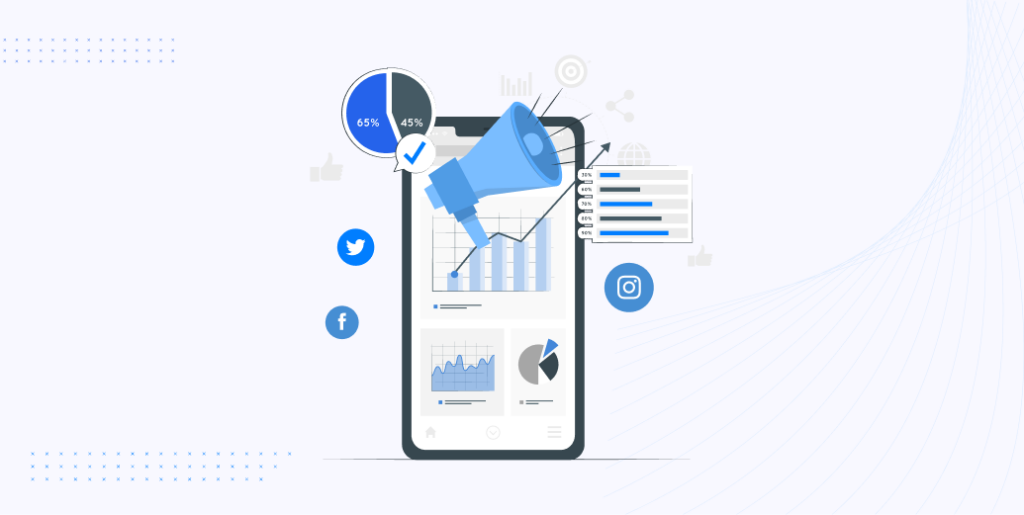
eCommerce marketing can have a profound impact on business growth, influencing various aspects of a company’s operations and performance. It promotes profitable growth by increasing customer reach, lowering cost-to-serve, and providing distinctive customer experiences.
Here we listed some aspects that eCommerce marketing contributes to business growth.
- Product Promotion: eCommerce enhances product promotions and service promotions through direct, information-rich, and interactive contact with customers.
- Brand Awareness: eCommerce marketing is the proven way to reach a wider audience and increase the brand awareness that every brand wants. People use social media platforms for brand awareness about their products.
- Global Market Reach: eCommerce expands the marketplace from national to international markets. With minimal capital, a company can easily and quickly reach more customers.
- Boost Sales: An excellent digital marketing strategy can drive more traffic to online stores and encourage conversion rates.
- Lead Generation: eCommerce marketing is the easiest way to find leads. Social media mostly helps to find new interested customers.
- Cost Effective: Digital marketing has lower overhead costs, resulting in higher profit margins.
- Audience Targeting: eCommerce marketing has the benefits of finding their exact target audience and reaching them through tools like Google ads etc.
- Adaptability: You can change your eCommerce marketing strategy according to market conditions and customer trends.
- Availability: Digital marketing provides the flexibility that you can manage eCommerce marketing from anywhere and anytime.
These contributions will have a severe impact on your business growth and you’ll be certain at some point to agree with my statement. Let’s see how these will impact your business.
Impact of eCommerce Marketing on Business Growth

Certainly, you can’t ignore the impact of eCommerce marketing if you’re doing good practices constantly. Before we hop into the marketing channels, let’s learn about the impacts of it.
Who knows maybe from now on you’ll have a better understanding.
Increased Market Reach
eCommerce marketing allows businesses to expand their market reach beyond geographical limitations. Through online platforms, businesses can access a global consumer base, effectively bridging the gap between sellers and buyers, and enabling access to previously untapped markets.
Enhanced Customer Acquisition
The targeted approach of eCommerce marketing enables businesses to reach and acquire customers with precision. Using data-driven strategies, businesses can effectively engage potential customers and convert them into loyal patrons through personalized and engaging content.
Improved Conversion Rates
eCommerce marketing helps to significantly improve conversion rates. Persuasive marketing tactics, such as targeted promotions and streamlined purchasing processes, contribute to higher conversion rates, leading to increased sales and revenue.
Building Customer Loyalty
Through eCommerce marketing, businesses can engage with customers on a more personal level, offering clear and concise communication. Post-purchase engagement and personalized interactions boost customer loyalty, resulting in repeat business and positive word-of-mouth referrals.
Data-Driven Decision Making
The wealth of data available through eCommerce marketing tools empowers businesses to make well-informed decisions. By analyzing customer behavior and feedback, businesses can continuously improve their marketing strategies and offerings, leading to enhanced customer satisfaction and loyalty.
Now that we’ve learned about the contributions and impacts, time to know the marketing channels that will work as funnels to drive more traffic and sales.
eCommerce Marketing Channels to Increase Sales
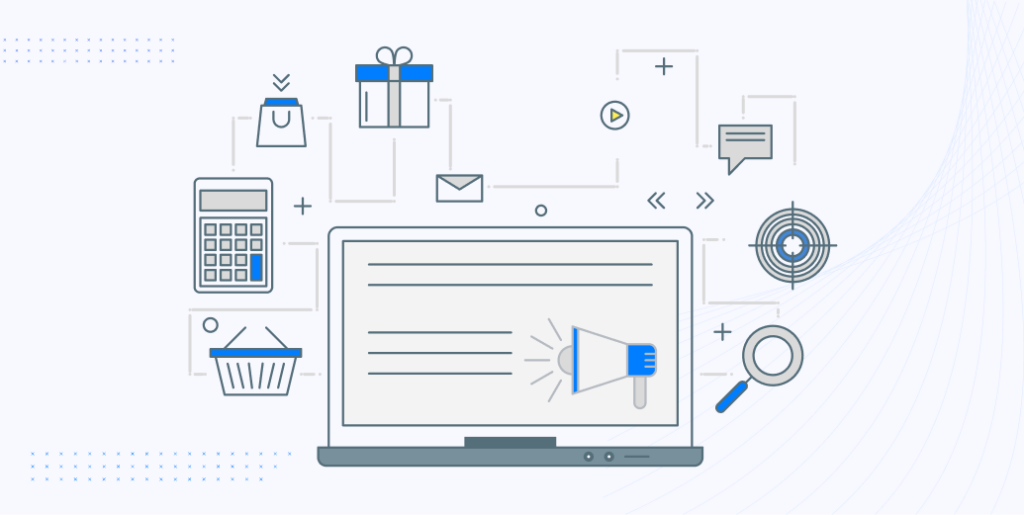
Marketing is bigger than you can ever imagine. There are just so many things attached to it that you simply can’t deny while striving to get the best out of marketing for your eCommerce store.
eCommerce marketing requires all digital marketing channels together to make sure that you’re doing your best to increase sales.
Let’s see the marketing channels we have here to work with.
Social Media Marketing
It’s not a secret that social media marketing has long grown to be one of the most popular means of marketing, for both brick-and-mortar and online businesses.
Social media marketing (SMM) is a form of internet marketing that utilizes the use of social media networks, such as TikTok, Pinterest, YouTube, Facebook, Instagram, Twitter, and many more to promote your company’s product.
Traditionally, It was a norm to distribute content to generate traffic to websites, but social media has evolved to provide businesses with more comprehensive marketing tactics, such as video, storytelling, live streaming, and many more.
One of the most praised SMM tactics that have been broadly adopted recently is to distribute shoppable posts on social media platforms.
Marketers mostly use compelling images with actionable purchase points so that customers can easily make a purchase when browsing social network sites. This is an innovative social media marketing technique to bridge the gap between browsing and buying.
One of the most obvious advantages of social media marketing is that it can reach out to a broad range of audience base with all groups of ages, genders, occupations, and hobbies, so SMM can be considered as the one-size-fits-all marketing channel for all businesses.
SMM is favored by marketers as it gives them a myriad of available tactics thanks to its flexibility to engage and directly connect with target consumers. From small to large businesses, world-recognized brands are hopping all over trending social networks to connect with their audience.
Content Marketing
Content marketing refers to the process of creating and distributing relevant, valuable, and engaging content to educate and attract a clear target audience, and ultimately to convert them to purchase at your store.
There are many channels that content marketing can be applied to, such as social media, blogs, landing pages, podcasts, print publications, and more.
In the eCommerce space, content marketing is considered the best means to distribute your product to the audience, as a highly relevant and comprehensive content marketing strategy will ensure other marketing channels become successful in parallel.
Aside from converting leads to customers, content marketing can be a golden weapon to deliver educational content, through all distribution mediums, and also, drive organic traffic to your site, which is enormously beneficial to your site’s SERPs.
In the age of inbound marketing, where customers voluntarily come to you after learning about you and your brand, content marketing is the game-changer that can appeal to potential customers to visit your site in a natural, non-disruptive way.
Search Engine Optimization (SEO)
We can’t talk about eCommerce marketing without mentioning SEO. Search Engine Optimization (SEO) is the practice of optimizing your store website to make it rank higher in search results pages, such as Google, Bing, etc.
When people search for a specific product or keywords related to your product and services, SEO will help you rank your page in a higher position, making it more appealing to users and thus, increasing the chance of getting more traffic to your site.
Why does SEO remarkably matter to eCommerce marketing? Nowadays consumers have a preference for searching for solutions and product recommendations on Google with the hope of solving their pain points.
They are looking for product options, comparisons, tips and tricks, guidelines, and many more to help them make better decisions.
That’s where eCommerce SEO comes in. It leads potential customers to your well-informed content and quality products, provides them with solutions, and ultimately, persuades them to purchase at your online store.
Therefore, optimizing your eCommerce site for better SEO is always one of the top priorities of any marketing strategy. Normally, SEO involves three main practices—on-page SEO, technical SEO, and off-page SEO.
eCommerce SEO provides you with a natural way of reaching your target audience without paying for ads, and bear in mind that taking people to your online site is the first but most essential step to convert them and drive sales.
Pay-Per-Click (PPC)
Pay-per-click (PPC) marketing channel, also known as paid search traffic, refers to all website traffic that comes from paid ads on search engines.
Though the PPC marketing channel can cost you a much larger amount of money compared to other methods, you can be guaranteed that your product and store website will reach specific target customers.
There are many different PPC ad networks, such as Microsoft Ads and Amazon Advertising, but at this moment, the two channels that are most used for paid ad campaigns are Google and Facebook.
Google Ads gain a reputation as the easiest channel to use and for many marketers, the primary source of all PPC advertisements.
Google PPC guarantees that your paid ads will appear at the top of search engine results, meaning that potential buyers will see your page first when they enter search terms that match your ads campaign.
However, remember that as you need to pay for Google each time a user clicks on your link, your conversion rate should be high enough for a good ROI. Otherwise, you might overspend your marketing budget without winning any real customers.
Along with Google, Facebook is also becoming a dominant paid marketing channel, with around 2.8 billion monthly active users. Facebook Ads are believed to provide the best return on investment (ROI) because Facebook advertising proposes an enormous customization potential.
Another great point of Facebook Ads is that it lets you define how much you want to spend with a variety of formats, such as the overall amount, your daily budget, and your cost per result.
Email Marketing
Email marketing refers to commercial emails you send to your “email subscribers” – contacts in the email list that have permitted you to receive emails from you.
This is a traditional and low-cost yet effective marketing method to promote, inform, drive sales, and raise awareness of potential as well as frequent customers about your brands and products.
Modern email marketing has left the traditional mass mailing method behind and instead focuses on engaging content and personalization.
Email marketing comes in many types, either promotional (post-purchase follow-up, abandoned shopping cart mail, etc.) or informational (newsletter, announcements, etc.) to fulfill a specific purpose.
Though email marketing has been there for a long time before the boom of eCommerce, it still holds a specific value in the world of eCommerce marketing.
Email automation along with subscriber personalization techniques can help you effortlessly set up a certain email campaign for specific customer groups that are segmented by interest or by their customer journey.
There are many Email Service Providers (ESP) that can help you to do that and achieve a great email marketing goal for a reasonable fee per month.
Video Marketing
Video marketing is a means of eCommerce marketing that uses videos to promote and market your product or service, normally on your digital and social channels.
This marketing strategy is growing popular as it can help you to increase visitor engagement and reach your audience with a new medium, which might broaden your customer base.
In 2023, online videos are forecasted to make up more than 92% of all consumer internet traffic, proofing that this marketing strategy must be included in your eCommerce marketing plan as soon as possible.
There are countless video marketing types for you to employ in conjunction with your marketing funnel, from brand videos and FAQs to instructional videos and more.
Simply having video content on your site can help boost the ranking on search engines, and of course, you can upload your videos on other social and marketing channels to drive more organic visitors.
Affiliate Marketing
Affiliate marketing is the process when a network of affiliates or referrers drive traffic to your online store and get paid for each sale they make.
As the popularity of social networks has continued to grow, this marketing method has at the same time become a great sales channel for many online stores, because merchants can decide their commission rates, and they only have to pay when a sale happens at stores.
Moreover, a new eCommerce might face challenges to build up brand awareness and generate sales, and an affiliate marketing program is a smart channel to quickly and affordably drive more traffic while not paying a dollar upfront.
Most affiliates share common characteristics to ensure that their audience will be receptive to purchasing your products, but still, there are several different affiliate marketing channels that you may leverage, including influencers, bloggers, paid sites, email lists, and well-known media channels.
Influencer Marketing
Influencer marketing is a strategic approach that involves partnering with influential individuals who have a devoted and engaged online following to promote products, services, or brands. This is a kind of marketing that is run by trust and credibility that influencers have built with their followers.
Influencer marketing has evolved across various platforms, including social media, blogs, YouTube, and podcasts, and encompasses a range of content formats such as sponsored posts, reviews, tutorials, and endorsements, providing brands with diverse ways to engage with their audience.
One thing is for sure, influencer marketing is now the most trending channel for eCommerce marketing. Influencer marketing is a type of social media marketing where social media influencers promote business products to their viewers through social media.
It’s the cost-effective and time-effective way to reach customers. Influencer marketing can increase sales, boost product visibility, and introduce your brand to a new or expanded target audience. Furthermore, it’s the instant trust-building strategy among the audience, reaching markets you might not organically reach.
Customer Reviews and Testimonials
Customer reviews and testimonials play a pivotal role in influencing purchasing decisions and driving sales in the e-commerce landscape.
It serves as compelling social proof, influencing potential buyers’ trust and confidence in a product or brand. Positive feedback and experiences shared by existing customers help alleviate apprehensions and build credibility, thus substantially impacting purchase decisions.
Businesses should highlight authentic and relatable experiences that resonate with the target audience.
Active customer engagement through review platforms creates transparency and a communicative relationship between the brand and its customers.
You may also respond to reviews, whether positive or negative, showcasing the brand’s dedication to customer satisfaction and encouraging trust among potential buyers.
eCommerce Marketing Best Practices Towards Growth Hack

Now that we know about the best eCommerce platform, important marketing channels, and the impacts that will have on your business, it’s high time we learn the best practices so that your eCommerce business can drive sustainable growth in the digital marketplace.
1. Take Advantage of Email Marketing
As we have stated above, email marketing is one of the most powerful eCommerce marketing channels to not only make new sales but to generate repeat customers as well. There’s no wonder why leveraging email marketing will be the first practice that we want to introduce you to.
The first step to winning an email marketing campaign is to capture as many quality email subscribers as possible.
Get started with email marketing by actively promoting your newsletter on blogs, and social media channels and making an effort to lure customers to sign up for your email list from the website and product page.
However, capturing customers’ emails is not enough to win your email marketing campaign.
What you send them and what they can gain from your email are much more important. Along with sending out weekly or monthly newsletters, there are some occasions such as exclusive codes and gifts, campaign reminders, thank you emails, or asking for feedback.
More than that, email marketing can be an effective weapon to follow up on customers who abandon shopping carts at your online store.
Customers might abandon their cart without purchasing for various reasons, but it’s worth noticing that they could be persuaded to change their minds and return to your online store to complete orders.
Sending an email to remind customers of their carts and how they want to purchase them in the first place can make you and your store wonder. It is proven that the email marketing strategy for your eCommerce store might bring more benefits than you thought.
2. Make Use of User-Generated Content
User-generated content (UGC) is a marketing method that lets your customers promote and market your business and product for you. UGC can take many forms, as long as the content is authentically produced by your customers.
This method helps you to drive traffic to your store without spending a huge cost, and it builds an authentic source of customer feedback to help users believe in what you offer.
Building user-generated content can cost your brand some time and effort, such as arranging a competition, or it might be as simple as utilizing social media hashtags under your brand name or using the ready content from review platforms.
No matter which method you decide to choose, it’s highlighted that UGC should be updated frequently and arranged beautifully on your store website to make sure first-time visitors can acknowledge and hopefully remember your brands.
3. Share Personalised Experience with Customers
Another best practice in eCommerce marketing you can utilize to drive more sales is to embrace personalization. Using behavioral data and customers’ past purchases and actions, it’s entirely possible to deliver personalized experiences to them.
For eCommerce, this marketing technique means tailoring your available marketing material and proposing the most relevant content to each customer group, even for first-time visitors, by analyzing and making use of all the information you can observe about their behaviors.
Personalization can happen in many forms, from simply including prospect customer names in the subject line of an email, to providing them with smart content along their eCommerce journey.
Rather than welcoming users with a generic landing page or a bulk product recommendation that is not appealing to them, personalized marketing can help you take customers to exactly where they want and show them the most related items based on their previous actions.
4. Take Advantage of Upselling Your Products
Upselling is a common marketing technique in retail, in which you persuade customers to buy a more expensive or upgraded version of their purchased items or to upsize these items.
The arguably biggest benefit of introducing upsell is that it helps increase the average order value, and for many businesses, the cost of upselling is normally much lower compared to acquiring a new customer.
When implementing this marketing technique at your online store, remember to take into consideration your customers’ essential needs and the budget they are willing to spend.
If your upselling products are exactly what customers require, a surprisingly high total price might let them down. Also, be sure that the new recommended product is a discernibly better fit that is worth the additional cost they have to pay.
5. Evaluate Market Demand
If you want to expand the product line at your eCommerce store, you must test the market demand before actually launching these products.
Evaluating market demand means analyzing the viability of your product and determining if there is a market demand for it so that you can anticipate future sales as well as prepare your inventory for these items at your store.
There are a variety of approaches that you can rely on, such as keyword research, social media trends, or local and global preferences.
One straightforward approach you can try to test the market demand within your customer base is to pre-sell items in your store and gauge the attention of users on these products. Desired items will receive more back-in-stock notification requests, and you can decide if this product is worth selling or not.
6. Integrate Loyalty Programs
A loyalty program aims at turning your visitors into long-term customers by proposing incentives for those who continue to make purchases at your store. The ultimate goal behind this program is to motivate repeat purchases and gain customers’ trust.
Building a loyalty program might take you a lot of time and effort, but the fact that this marketing practice can help you increase repeat purchases, boost retention rates, and more customer referrals pays off.
There are many rewards programs you can adapt for your eCommerce store:
- Point-based loyalty: This is the most common type of loyalty program. Customers accumulate points from purchasing products and they can redeem them for gifts, discount codes, and more.
- Tiered loyalty: In this membership type, customers get different discounts depending on their ranks.
- Paid loyalty: This loyalty program has become more popular recently. In paid loyalty, customers pay a membership fee upfront for great benefits they can use all the time.
When building a loyalty program for your eCommerce store, remember to diversify the ways customers can receive rewards for their “loyalty”, be it through promotional offers, limited codes, special gifts, or discounts.
Also, you can expand your reward program to engage in social media activity or referral programs, instead of the traditional method of prompting customers to purchase more from your store.
7. Engage in Live Chat
One of the best ways to close the gap between online and in-store shopping is to utilize live chat as a virtual assistant to support and engage customers on your site.
Many automated live chats can answer FAQs on certain product pages or target customers after they have been browsing your site for a certain length of time, which help you to assist visitors without worrying about high employee cost.
Better than that, live chat also enables you to communicate directly with customers and play the role of a store assistant to give advice and address any concerns customers might have when they are about to purchase at your store.
Live chat is crucial to resolving any issues on time, without letting prospects wait for a reply or support through emails, and an excellent customer service team working through live chat can apparently drive more sales and greatly boost the cross-sale rate at your store.
This marketing tactic is a high-impact method to engage with site visitors and assist potential customers coming to your store.
8. Implement Retargeting Strategy
We all agree that it takes more than one engagement before customers decide to purchase at your eCommerce store.
So how to make them come back and become loyal customers?
That’s where retargeting, or remarketing comes to play. This marketing strategy is so powerful because it allows you to follow your leads around the internet and display ads to them with the intent of driving them back to your site until they make a purchase.
However, this retargeting strategy can only succeed if your ads are as specific and relatable as possible.
Make sure the ads you display around your customers contain enough information that they are looking for and are engaging enough to allure them back to your site.
9. Optimize eCommerce funnel
eCommerce funnel represents the process or the overall path customers take from being aware of your business to returning after purchasing at your online store.
There are five stages involved, namely awareness, interest, decision, action, and retention, and each stage in the eCommerce funnel is concerned with a customer’s stages of interest in your brand.
The marketing funnel helps you to understand how prospective customers are interacting with your website and your brands, and therefore, optimizing the eCommerce funnel can make it easier to convert leads and achieve sales goals.
10. Ensure a seamless shopping experience
Optimizing your store for mobile is no longer a choice, it’s a must. Therefore, ensuring an excellent shopping experience across devices has become the top priority of many retail businesses for the past few years.
To ensure a seamless shopping experience, you will need more than a responsive design. You have to make sure visitors accessing your online store from all devices can experience an excellent experience that’s been optimized for that specific device.
You can achieve that by optimizing all elements on your site, such as bigger navigation buttons, reformatted content, and images. Investing in PWAs might be a smart decision to help you effortlessly achieve all of that.
Wrap Up

eCommerce marketing will rely on a blend of creativity, innovation, and customer-centric approaches to drive sales and facilitate long-term growth. Embracing these best practices will undoubtedly position businesses to thrive in the dynamic and ever-expanding world of eCommerce.
We all know that the eCommerce industry is thriving, and at the same time, becoming more competitive than ever. We hope that these most-updated best practices can help you win your sales goals with the best eCommerce marketing strategy.
As we look ahead to 2024, it’s apparent that data-driven decision-making making, personalized marketing strategies will continue to be imperative for success.
That’s all for now, until next time.
Adios!
Frequently Asked Questions (FAQ)
An eCommerce marketing material refers to any type of promotional content or collateral used by businesses to market their products or services online. This can include product descriptions, images, videos, social media ads, email campaigns, blogs, and more.
The goal of eCommerce marketing materials is to attract and engage customers, drive sales, and build brand awareness in the online marketplace.
The best eCommerce marketing strategy will vary depending on the specific business and target audience.
However, some common strategies include optimizing website design and user experience, implementing SEO techniques to improve organic search visibility, and utilizing social media marketing to reach and engage with customers.
Utilizing email marketing to nurture leads and promote products, leveraging influencer marketing to expand reach, and utilizing data analytics to track and optimize marketing efforts.
Ultimately, the best strategy will involve a combination of these tactics tailored to the unique needs and goals of the eCommerce business.
The best eCommerce marketing automation software depends on your specific needs and business goals. Some popular options include Klaviyo, Mailchimp, HubSpot, and ActiveCampaign.
It is recommended to research and compare different software options to find the one that best suits your requirements.